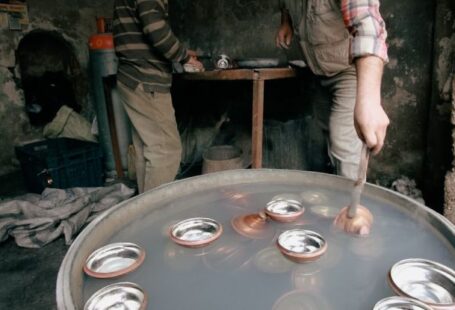Rome, known for its rich history and cultural significance, has long been a hub for artistic expression. Among the diverse forms of art present in the city, street art stands out as a powerful medium through which artists reflect Rome’s cultural and political climate. These artists use the streets as their canvas to convey messages, provoke thought, and engage with the public in a way that traditional art forms often cannot. By examining the works of street artists in Rome, we can gain insight into the city’s current social issues, historical narratives, and political tensions.
**The Evolution of Street Art in Rome**
Street art has a deep-rooted history in Rome, dating back to ancient times when graffiti adorned the walls of the city. However, it wasn’t until the 2000s that street art in Rome began to gain recognition as a legitimate form of artistic expression. Artists like Blu and Alice Pasquini emerged on the scene, using the city’s walls as a platform to showcase their creativity and engage with the public.
**Cultural Reflections in Street Art**
One of the most striking aspects of street art in Rome is its ability to reflect the city’s cultural heritage. Many street artists draw inspiration from Rome’s ancient history, incorporating motifs from Roman mythology, architecture, and art into their works. By blending the old with the new, these artists create a dialogue between past and present, inviting viewers to reconsider their understanding of Rome’s cultural identity.
**Political Commentary Through Street Art**
In addition to cultural reflections, street art in Rome serves as a powerful tool for political commentary. Artists often use their work to address pressing social issues, critique government policies, and challenge the status quo. From murals denouncing corruption to stencils advocating for migrant rights, street art in Rome provides a platform for dissenting voices to be heard.
**The Power of Public Art**
Unlike art confined to galleries and museums, street art has the unique ability to reach a wide audience and spark conversations among diverse communities. By taking art out of traditional spaces and into the streets, artists in Rome are able to engage with people from all walks of life, transcending barriers of class, race, and education. In this way, street art becomes a democratizing force, making art accessible to everyone and shaping public discourse in the process.
**Challenges and Controversies**
Despite its growing popularity, street art in Rome still faces challenges and controversies. Some view it as vandalism, a form of urban blight that detracts from the city’s beauty. Others argue that street art is a legitimate form of artistic expression that should be protected and celebrated. The tension between these opposing viewpoints highlights the complex relationship between art, public space, and cultural heritage in Rome.
**Redefining Urban Landscapes**
Ultimately, street artists in Rome play a vital role in redefining the city’s urban landscapes. By transforming blank walls into vibrant canvases, they inject new life into the streets, provoking thought, and inspiring change. Whether addressing cultural traditions, political injustices, or social inequalities, street art in Rome serves as a mirror reflecting the city’s dynamic cultural and political climate.
**In Retrospect: The Legacy of Street Art in Rome**
As we reflect on the impact of street art in Rome, it becomes clear that these artists are not just creators but also storytellers, historians, and activists. Through their bold and thought-provoking works, they challenge us to see the city in new ways, to question the narratives we have been told, and to imagine a more inclusive and just future. In this sense, street art in Rome transcends mere aesthetic value; it becomes a powerful force for social change and cultural transformation.





